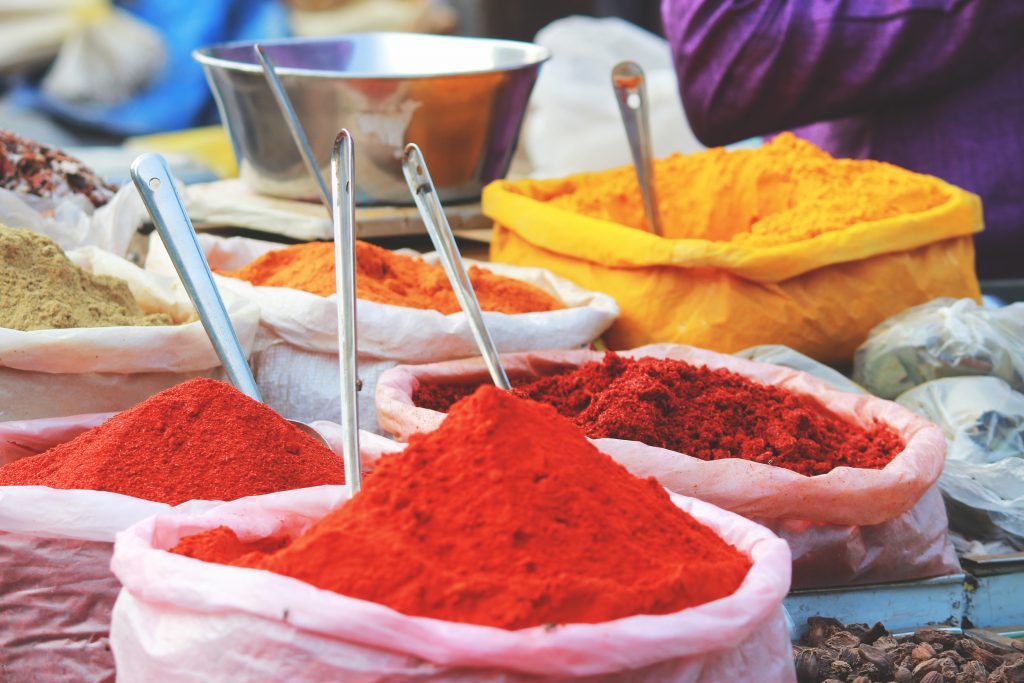

This formula was first mentioned in the ‘Shang Han Lun’ and is confined to Shao yin disorder.
伤寒论 318 条云:”少阴病,四逆,其人或咳,或悸,或小便不利,或腹中痛,或泄利下重者,四逆散主之”
In the book line 318 recites:
“When in lesser yin disease [there is] counterflow cold of the limbs, the person may cough, or have palpitations, or inhibited urination, or pain in the abdomen, or diarrhea with rectal heaviness, counterflow cold powder (Si Ni San) governs” [1].
Ni 逆 the direct translation is “rebellion”, the terminology of which refers to something flowing in the opposite direction.
Si 四 means four, which refers to the four limbs. This refers to feeling cold in the four extremities caused by poor flow of Qi. The origion of poor flow of qi is qi stagnation and dampness impairing the flow of yang and its ability to warm the extremities.
The formula regulates liver Qi and disperses Yang. When the wood is stagnant this may affect the earth, resulting in stomach aches and urgent diarrhea. The flow of Qi in the entire body is impaired, which effects the Lungs and causes a cough. Furthermore, the stagnation of Qi impairs the flow of Heart Yang causing palpitations. The formula regulates the liver, harmonizes the flow of Qi, and disperses oppressed Yang.
Si Ni San is said to be a combination meant to harmonize between wood and earth resulting in diarrhea, pain in the chest or hypochondria, bloating or abdominal pain, and cold hands.
Chai hu is pungent and cool, enters the Liver and gallbladder, regulates liver Qi, ascends Qi and yang. The herb moves and disperses like the branches of a tree, therefore is effective in regulating the liver. Bai Shao prevents excessive dispersion and depletion of Yin and blood.
Zhi Shi is bitter, breaks stagnant Qi, descends stomach Qi and purges accumulation of Qi and damp in the middle and lower burners.
Bai Shao is sour and cool, enters the liver, nourishes blood, relaxes the liver, harmonizes Ying and regulates between the liver and spleen. The herb harmonizes the center and along with Zhi Gan Cao tonifies the spleen. The combination of the two relax spasm and relieve abdominal pain.
This formula is balanced by the following combinations of herbs:
Bai Shao + Chai Hu– Complement one another, as one disperses and opens outward while the other contracts and closes inward. Draining wood whild supporting earth, balancing liver and spleen organs.
Chai Hu + Zhi Shi– These herbs stimulate the movement of Qi in different directions, stimulating the dispersion of Qi in the whole body. One ascends Qi whereas the other descends Qi.
Zhi Shi + Bai Shao can sooth Qi flow, harmonize blood and stop abdominal pain.
Bai Shao + Gan Cao– Harmonize between the dominant liver and the weak spleen.
In the source text this formula is confined to the treatment of Shao Yin pathology which I find surprising. Shao Yin pathology is normally related to Yang deficiency and cold, whereas Si Ni San is a formula that regulates the flow of Qi in the pivotal mechanisms of the body (yin and yang, internal and external). Therefore, it would seem more fitting for Si Ni San to treat Shao Yang disorder by regulating the “small fire” related to Shao yang. The “small fire” of the Shao Yang likes movement and dislikes stagnation, it stimulates the movement of Qi and yang in the entire body. This fire plays an important role in different mechanisms of the body such as: dispersing Wei Qi on the external levels of the body, assisting in digestions (like cooking a stew), and providing emotional stability through regulation of the liver.
It may be possible that the formula was not placed under Shao Yin originally but was moved when the book was edited and rearranged, put alongside Si Ni Tang because of the symptom of cold extremities (although the pathologies of the two are fundamentally different).
Another reason for this formula being placed under Shao Yin disorder may be due to the fact that the Shao yin serves as a pivot between water and fire, yin and yang, and it is located between the Tai yin (spleen) and Jue yin (liver). Some doctors claim that this formula does in fact belong to Shao yin but also involves a case of wood invading stomach, or a case of weak earth resulting in poor flow of pure yang in the body [2].
Formula uses in ancient history:
In 1626 Zhang Jing Yue replaced Zhi Shi with Zhi Ke. In addition, he added the herbs- Chuan Xiong and Xiang Fu in order to treat Liver Qi stagnation resulting in hypochondriac and period pain, creating the formula known as “Chai Hu Shu Gan San”.
Lei Ju Fang Guang Yi found the formula effective in treating incessant dysentery, fullness of the hypochondria and chest, oppression of the area below the heart, abdominal pain and bloating.
Formula uses today:
Infectious diseases of the liver, spleen and gallbladder, impaired biliary flow, colitis, appendicitis, gastritis, gallstones, irregular periods, leucorrhea, PID, emotional distress, palpitations, and more. All must have a background pathology of liver invading earth.
Clinical examples
1.Internal medicine
Chronic gastritis
Zhang Fu Yan applied this formula on 125 patients suffering from gastritis with the following modifications [3]:
Stomach heat: Huang Lian, Pu Gong Ying, Lian Qiao, Zhi Gan Cao
Indigestion: Shen Qu, Shan Zha, Mai Ya, Lai Fu Zi
Spleen and stomach deficiency and cold: Huang Qi, Gui Zhi, Hong Hua, Sheng Jiang
Blood stasis: Dan Shen, Dan Pi, Zhi Yuan Hu
Stomach yin deficiency: Shi Hu, Mai Dong, Tian Hua Fen
Acidity of the stomach: Zuo Jin Wan, Hai Piao Xiao
Loose stool: Bai Zhu, Fu Ling
After receiving 5-15 doses of herbs 45 patients improved significantly, 68 patients felt better, 12 patients felt no change at all.
Gastritis caused by biliary reflux
Zhou Yun Ling used Zuo Jin Wan + Si Ni San in order to treat gastritis caused by bile flowing upward toward the stomach [4]. The formula consisted of-
Chai Hu, Zhi Ke, Chi Bai Shao, Gan Cao, Chuan Lian Zi, Fo Shou, Gu Ya, Mai Ya, Wu Zhu Yu, Wa Leng Zi
Modifications:
Liver invading stomach with belching: Xuan Fu Hua, Dai Zhe Shi
Severe swelling and pain: Yuan Hu, Chuan Lian Zi
Spleen Qi deficiency: Si Jun Zi Tang
Stomach yin deficiency: Tai Zi Shen, Shi Hu
Three months later 84 patients were tested by laparoscopy out of which 44 seemed to have significantly improved, 35 benefitted from the treatment, and 5 experienced no change whatsoever.
Chronic colitis [5]
Soft stool or diarrhea, abdominal pain, tongue with yellow coating:
Huang Qin, Huang Lian, Ge Gen
Modifications:
Diarrhea accompanied by abdominal pain: Tong Xie Yao Fang
Cold and deficiency of the middle burner: Gan Jiang, Dang Shen, Bai Zhu
2.Gynecology
Dysmenorrhea
You may add the following herbs to the initial formula:
Yan Hu suo, Dang Gui, Xiang Fu, Chuan Xiong, Hong Hua
Early periods
When liver stagnation causes heat resulting in early periods we may add:
Huang Qin, Huang Lian + Si Wu Tang
To summarize:
Si Ni San has many uses in cases of indigestion, thyroid dysfunction, cardiac diseases (arrhythmia, cardiovascular diseases, low blood pressure), emotional distress, and menstrual issues all of which have a background of liver invading spleen.
Important criteria for using the formula:
Oppressed yang
Liver Qi stagnation
Disharmony of stomach Qi
Puls: wiry, or wiry and thin, or wiry and slippery, or wiry and rapid
Tongue: pale or normal or red. White thin coating or slightly yellow, or thick yellow coating.
In relation to the pathology we may modify the formula and add herbs. You must be cautious when giving the formula in cases of liver yang rising or liver fire or in cases of severe deficiency.
[1] Shang Han Lun. On Cold Damage. Translations and Commentaries by Mitchell, Craig, Fengye and Nigel Wiseman
[2] Shan Han Lun Yu Lin Zheng. She Hui Min- Guan Dong Ke Zhi Chu Ban She
[3] Zhang Fu Yan, Hei LongJiang ZhongYi Yao, 1991;(5):11-12
[4] Zhou Yun Ling, ShangHai ZhongYi Yao ZaZhi, 1991(11):7-8
[5] Shan Han Lun Yu Lin Zheng. She Hui Min- Guan Dong Ke Zhi Chu Ban She (p. 580)





1 Comment. Leave new
Like!! Great article post.Really thank you! Really Cool.